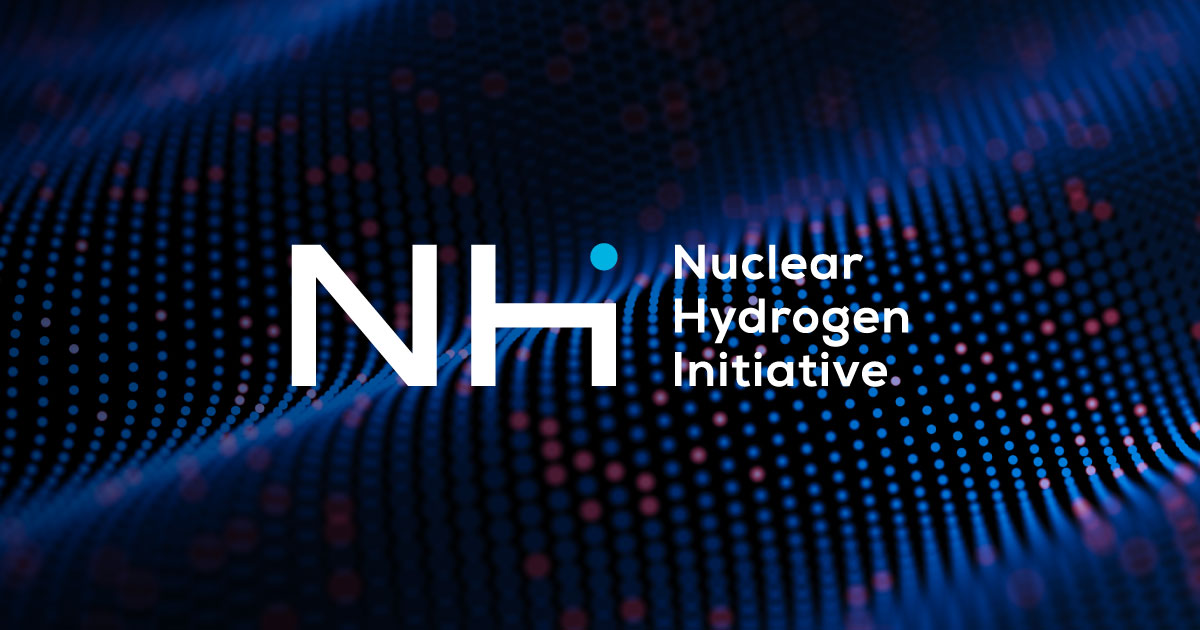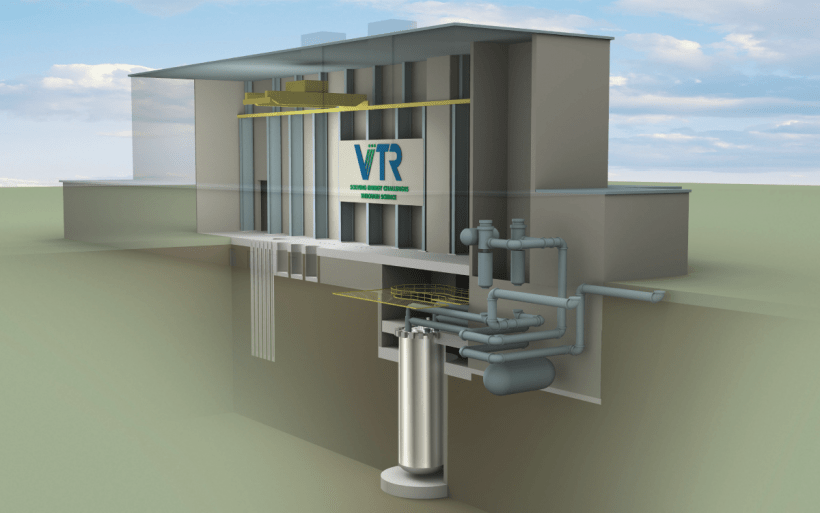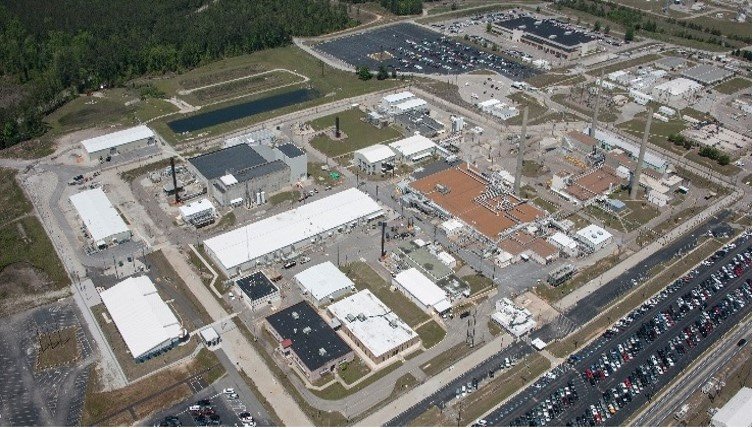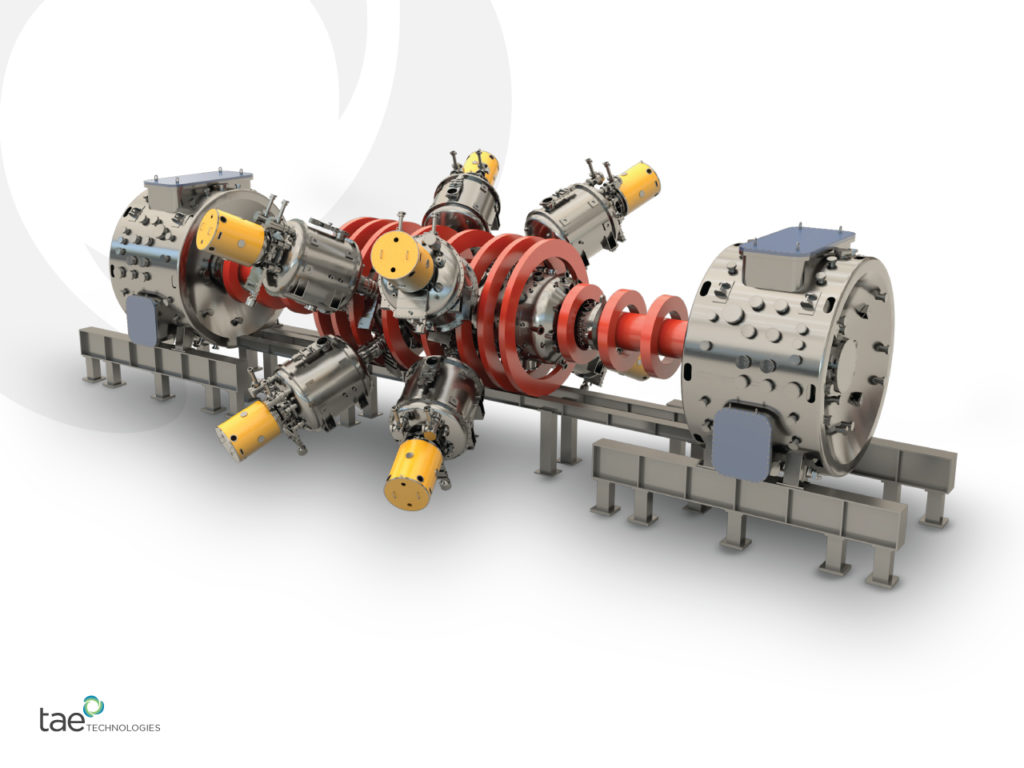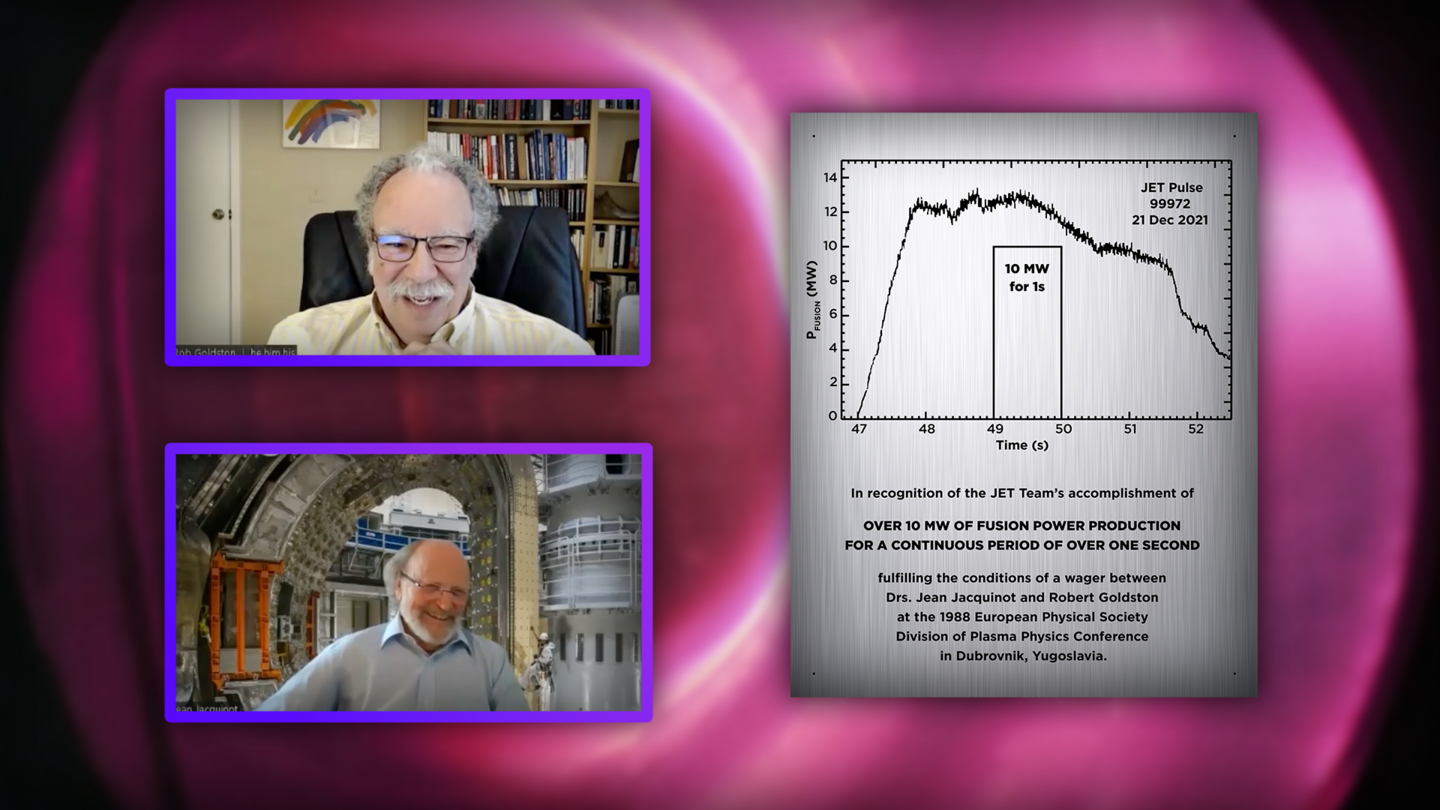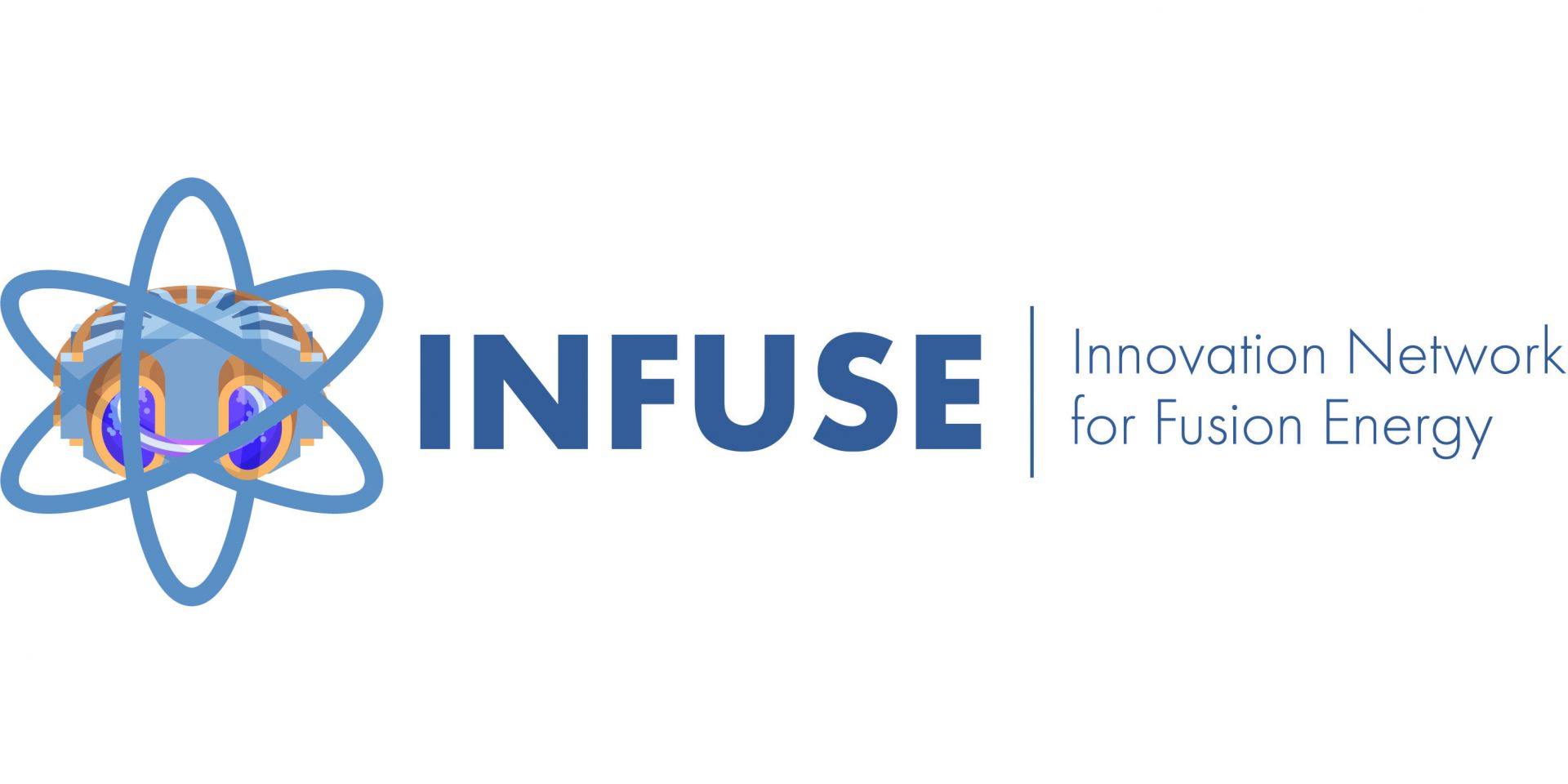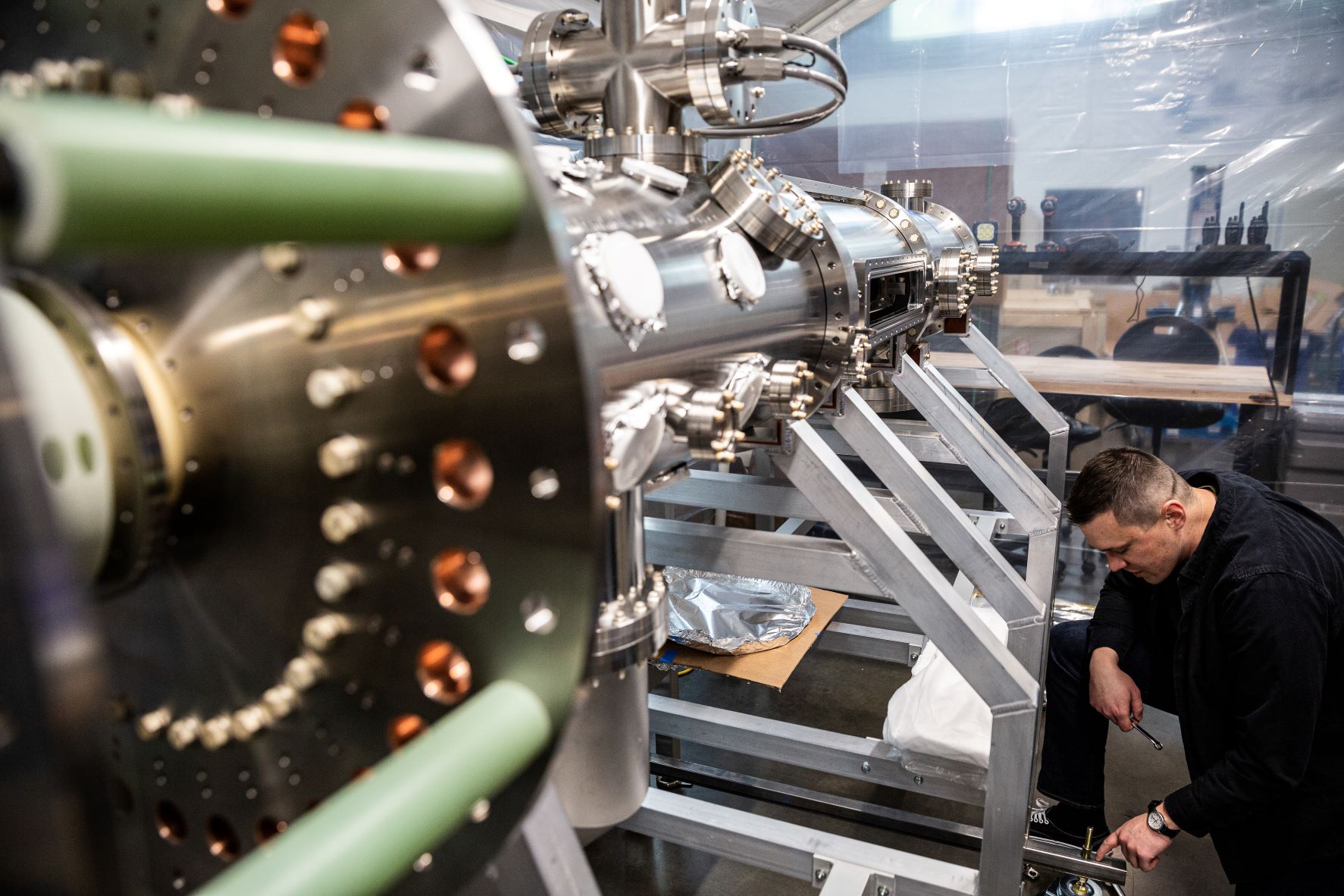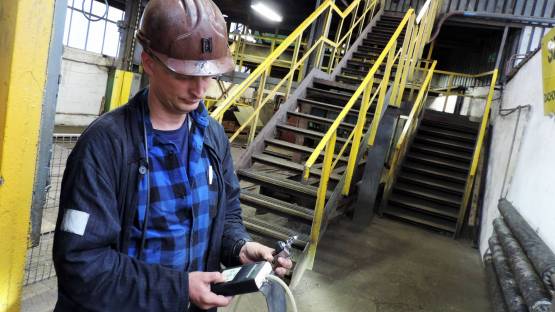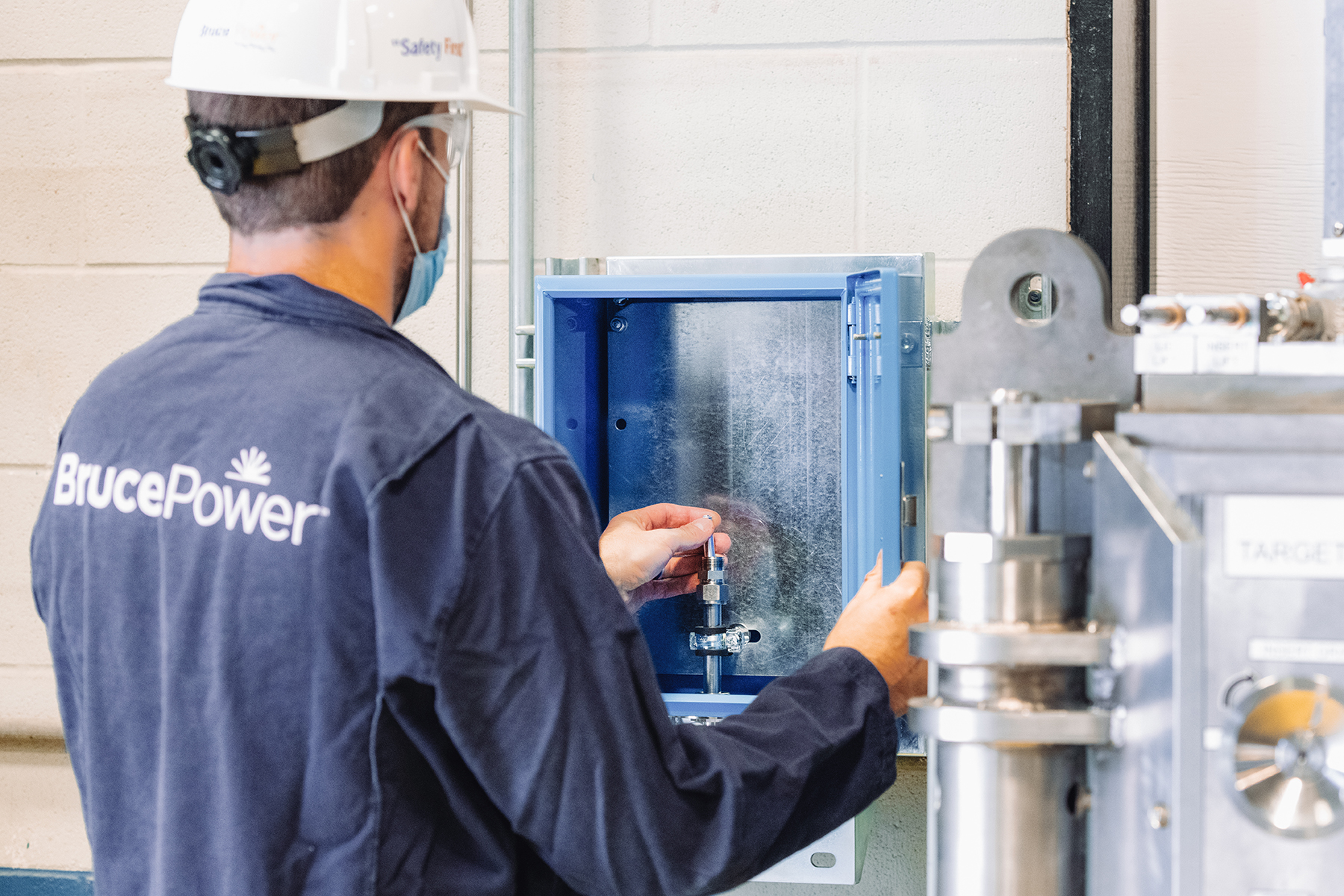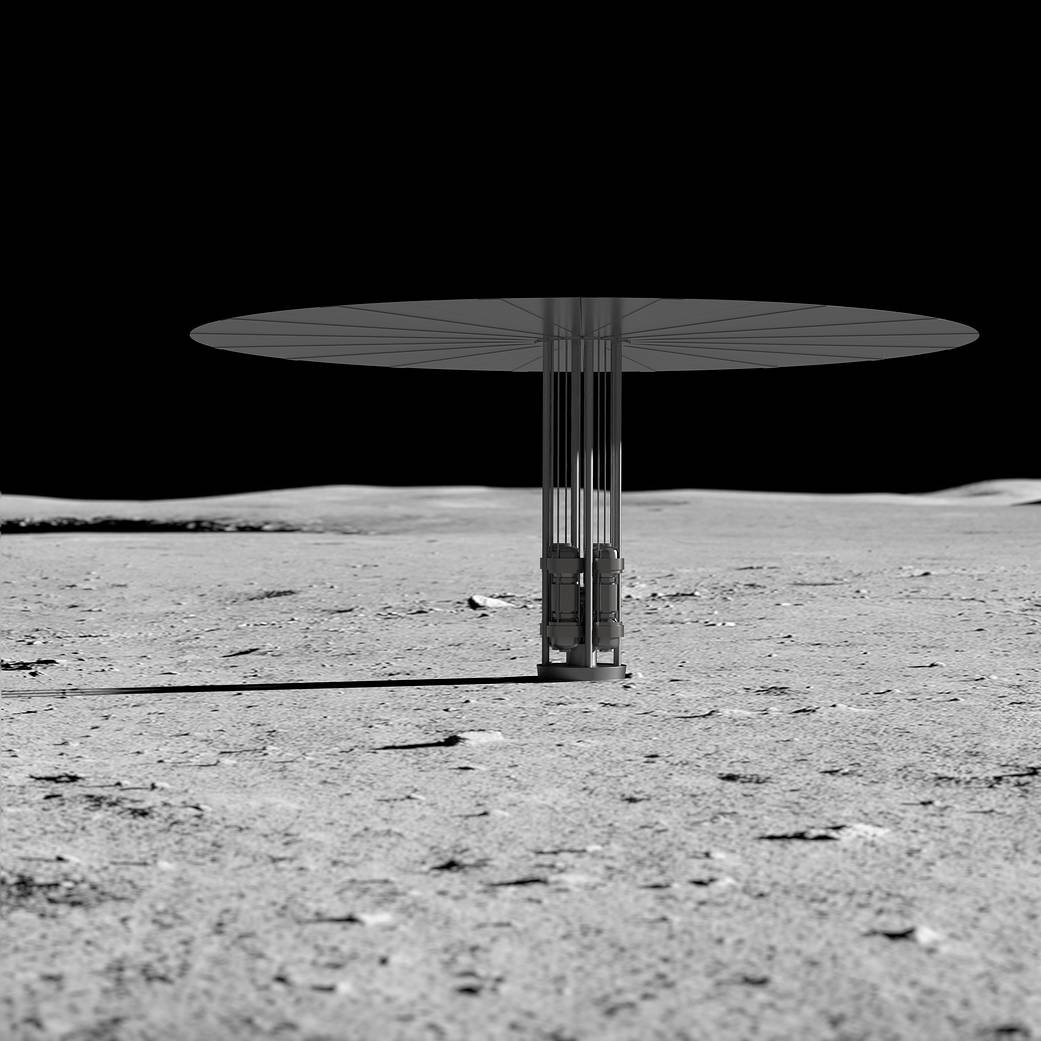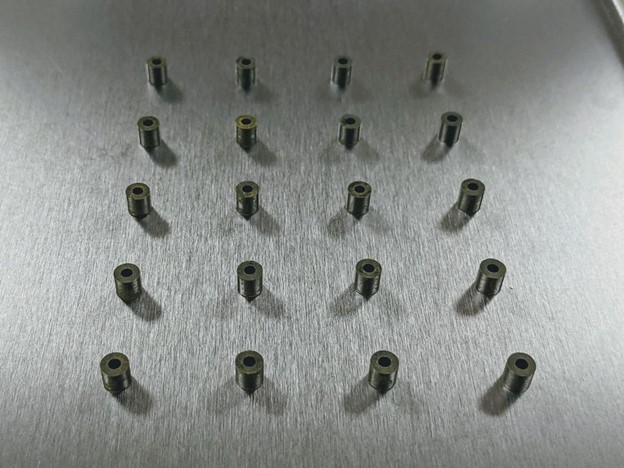An artistic rendering of the Versatile Test Reactor. (Image: DOE)
The Department of Energy today issued a Record of Decision (ROD) for the Final Versatile Test Reactor Environmental Impact Statement (final VTR EIS; DOE/EIS-0542). The VTR will be a sodium-cooled, fast-neutron-spectrum test reactor that will enhance and accelerate research, development, and demonstration of innovative nuclear energy technologies critical to tackling the climate crisis, according to the DOE.
The VTR ROD and final VTR EIS are available for viewing or download here.
Savannah River National Laboratory (Photo: DOE)
When the Department of Energy announced Innovation Network for Fusion Energy (INFUSE) awards earlier this month, Savannah River National Laboratory was named a recipient of two of the 18 awards. SRNL released a statement on July 19 explaining how a national lab with a long history of supporting environmental management and national security missions can lend a hand in the development of future commercial fusion power.
Copernicus, TAE’s sixth-generation fusion reactor. (Image: TAE)
California-based TAE Technologies has announced that its accomplishments with its fifth-generation fusion research reactor, Norman, have allowed it to secure sufficient strategic and institutional investments to fund the construction of its sixth-generation research reactor, Copernicus.
A screenshot taken from a INL video demonstrating MAGNET and its digital twin. (Source: INL)
Researchers at Idaho National Laboratory (INL) recently performed their first digital twin test of the Microreactor Agile Non-nuclear Experimental Testbed (MAGNET) and captured the demonstration in a video posted July 14. The digital twin—a virtual representation of a microreactor—was built using advancements in remote monitoring, autonomous control, and predictive capabilities that could help lower operating costs of microreactor technologies and enhance their safety.
A plaque honoring JET’s world record–setting achievement of fusion energy production of 50 megajoules in a single shot (right) and commemorating a 34-year-old bet between Goldston (top left) and Jacquinot (bottom left). (Photo: PPPL and EUROfusion consortium/collage by Kiran Sudarsanan)
A wager struck by two plasma physicists 34 years ago was finally fulfilled in June during the opening day of the 48th European Physical Society Division of Plasma Physics, when Robert Goldston, former director of the Department of Energy’s Princeton Plasma Physics Laboratory (PPPL), virtually presented a plaque to his friend and colleague Jean Jacquinot, former director of the Joint European Torus (JET), EUROfusion's flagship fusion experiment based at the Culham Centre for Fusion Energy in the United Kingdom. Their bet, and JET’s record-breaking achievements in 2021, were celebrated in an article published by PPPL on July 8.
This fusion tokamak cutaway illustrates how the GAMBL concept would be incorporated into a fusion pilot plant. The SiC-tungsten composite wall provides superior heat-removal capabilities and durability, and a modular approach enables fabrication using existing technologies. (Image: GA)
Researchers at General Atomics (GA) are proposing a breeding blanket made of modular silicon carbide–based components to withstand the intense conditions in a high-power fusion power plant. The GA modular blanket (GAMBL) concept is described in an article published this month in the journal Fusion Engineering and Design, and was introduced by GA in a July 13 press release.
The first plasmas created in FuZE-Q, shown here during assembly, represent a key step towards fusion experiments with net energy output. (Photo: Zap Energy)
Zap Energy has created the first plasmas in its FuZE-Q machine—the company’s fourth prototype machine and the one it hopes will demonstrate a net energy gain from a Z-pinch fusion plasma just one millimeter in diameter and half a meter long. Zap Energy announced that engineering achievement and the close of $160 million in Series C funding in late June.
A shot from a coal mine in Poland. (Photo: IAEA)
The new IPS installed in Bruce Power’s Unit 7 will produce Lu-177 for treating cancer. (Photo: Bruce Power)
An international collaboration between Bruce Power, Isogen (a joint venture of Kinectrics and Framatome), and ITM Isotope Technologies Munich SE, announced a milestone marking the first time that lutetium-177, a short-lived medical radioisotope, has been produced in a commercial nuclear power reactor.
A rendering of the MCRE. (Image: Southern Company)
The Gateway for Accelerated Innovation in Nuclear (GAIN) awarded vouchers to Orano Federal Services and TerraPower on June 22, giving them access to specialized facilities and expertise at Department of Energy national laboratories. Orano is partnering with Oak Ridge National Laboratory on a new technical study that updates the physical chemistry limits for the safe transport of uranium hexafluoride (UF6) gas enriched up to 10 percent in existing shipping containers, and TerraPower is turning to Los Alamos National Laboratory’s neutron testing capabilities to measure the properties of chlorine isotopes and determine how they will behave in the Molten Chloride Reactor Experiment (MCRE).
The Spherical Tokamak for Energy Production (STEP), shown here, is a government-backed prototype fusion energy plant planned for operation in the U.K. in the early 2040s. (Image: UKAEA)
Future fusion energy facilities will continue to be regulated by the Environment Agency (EA) and Health & Safety Executive (HSE), the U.K. government announced June 20, and existing law on nuclear regulations will be amended to exclude fusion energy facilities from nuclear fission regulatory and licensing requirements. The move was announced by the United Kingdom Atomic Energy Authority (UKAEA) with the expectation it would provide “clarity to developers of prototype/demonstration fusion facilities currently being planned to support rapid commercialization.”
A conceptual illustration of a fission surface power system. (Image: NASA)
Three teams have been picked to design a fission surface power system that NASA could deploy on the moon by the end of the decade, NASA and Idaho National Laboratory announced today. A fission surface power project sponsored by NASA in collaboration with the Department of Energy and INL is targeting the demonstration of a 40-kWe reactor built to operate for at least 10 years on the moon, enabling lunar exploration under NASA’s Artemis program. Twelve-month contracts valued at $5 million each are going to Lockheed Martin (partnered with BWX Technologies and Creare), Westinghouse (partnered with Aerojet Rocketdyne), and IX (a joint venture of Intuitive Machines and X-energy, partnered with Maxar and Boeing).
(Photo: Clean Core Thorium Energy)
The Advanced Test Reactor (ATR) at Idaho National Laboratory will soon be irradiating fuel pellets containing thorium and high-assay low-enriched uranium (HALEU) developed by Clean Core Thorium Energy for use in pressurized heavy water reactors (PHWRs). Clean Core announced on June 14 that it will proceed with irradiation testing and qualification under an agreement with the Department of Energy; the plans have been in the works since at least 2020, when the DOE filed a National Environmental Policy Act (NEPA) disclosure for the work.
Roadmap for the China Initiative Accelerator-Driven System project development. (Image: Zhijun Wang/CAS)
Researchers at the Chinese Academy of Sciences’ Institute of Modern Physics are making strides with their China Initiative Accelerator-Driven System (CiADS) technology, which is being developed to get more life out of used nuclear fuel. Defense One, an online news source that focuses on “the future of U.S. defense and national security,” describes the prototype system as a step in moving China toward energy independence and advancing that nation’s “global leadership in climate-friendly technology.”
